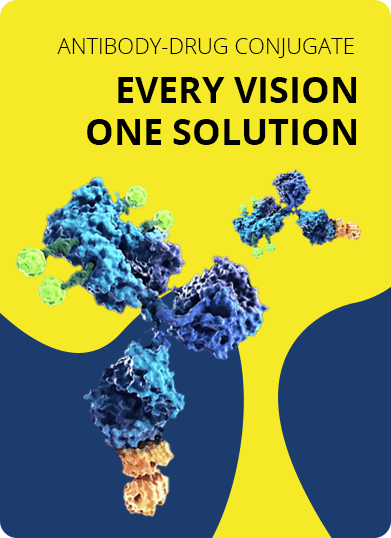- Home
- UTC Development
- Fragment-Drug Conjugate Development
- Antibody Fragment-Drug Conjugate Development
- SIP-Drug Conjugate Development
SIP-Drug Conjugate Development Service
Single-chain variable fragments (scFvs) are a versatile fragment format, arguably the corner-stone of many antibody discovery programs. Acting as dimerized scFvs, small immunoproteins (SIPs) have a place in antibody fragment-drug conjugates (FDC) development, especially for non-internalizing targets. Armed with advanced antibody expression and conjugation technology as well as perfect project management procedure, Creative Biolabs has had a great deal of success in anti-tumor vasculature SIPs development. We now provide customized SIPs-based FDC generation as well as characterization services for our honor clients.
Introduction of SIP
SIPs comprise scFv fragments fused to an immunoglobulin (Ig)-derived constant region CHε4-domain. The presence of these constant regions facilitates the non-covalent dimerization of two monomers, producing bivalent binders. Thus, SIPs demonstrate comparable valency to a whole IgG within a significantly smaller format (∼80 kDa). SIPs are most commonly expressed in mammalian cells, and features such as constant domain, linker length, and the presence of site-specific amino acids, can be easily altered. Tumor vascular targets such as fibronectin and Tenascin C are more accessible, stable, and common to various tumor types. The SIP format is favored for these targets due to superior tumor uptake compared to other smaller antibody fragments, and it also has greater specificity/contrast compared to IgGs, as evidenced by quantitative biodistribution studies and by nuclear medicine investigations. The incorporation of two C-terminal cysteines allows payload conjugation using disulfide and other chemistries without loss of immunoreactivity or tumor-targeting performance.
SIP-based FDC Examples
There are not many examples of SIP-based FDC targeting non-internalizing antigens as the generally accepted view is that the conjugate needs to be internalized for the payload to be efficiently released to reach the tubulin or DNA target. Current successful studies mostly focus on two non-internalizing biomarkers, fibronectin and Tenascin C, to target tumor vasculature. The high efficacy of these SIP-based FDCs can probably be attributed to the bystander effect, whereby tumor cells close to the target cell are also killed. For instance, an early demonstration using an anti-fibronectin SIP and the payload cemadotin showed significant tumor inhibition and prolonged lifetime. A subsequent study revealed the SIP-based FDC had a better performance than a comparable diabody. A side-by-side comparison of this FDC with a comparable IgG ADC showed that the former accumulated into the tumor and cleared more rapidly and the 24 h uptake levels were more than 4-times higher for the IgG ADC. The payload on the ADC was at least 10-times more stable, but the SIP-FDC was more effective even on a molar basis.
Conjugation Strategy
Cysteine Conjugation
Chemical conjugation to SIPs is commonly achieved via site-specific incorporation of a cysteine residue into the constant domain of the monomer. Thus, upon dimerization, each SIP contains two residues for site-selective attachment of a payload. These cysteine residues often form disulfide bonds and must be reduced before conjugation. Studies showed that the length of the linker between the constant domain and the payload has a significant effect on the rate of payload release, and overall stability. Creative Biolabs has focused on using traceless linkers which form a disulfide bond with these cysteine residues. These linkers are susceptible to cleavage in the extracellular environment, resulting in the release of the payload and reformation of the native SIP. High-affinity non-internalizing SIPs, along with the traceless disulfide linkers help you achieve promising results.
Other Approaches
Non-specific lysine conjugation using NHS-ester based linkers is also available for SIPs conjugation. Besides, approaches such as traditional and novel chemical modifications, the incorporation of unnatural amino acids, enzymatic approaches, and the inclusion of specific tags could be used for SIP conjugation. The choice of approach should be determined according to your project demands. If you are interested in our SIP-based FDC development services, please feel free to contact us for more information.
Related Services
For Research Use Only. NOT FOR CLINICAL USE.

Online Inquiry
Welcome! For price inquiries, please feel free to contact us through the form on the left side. We will get back to you as soon as possible.
